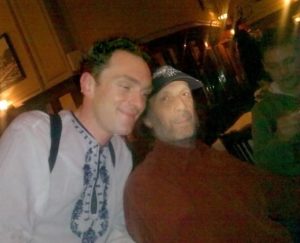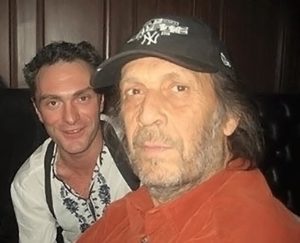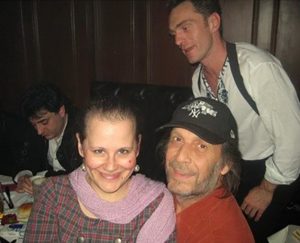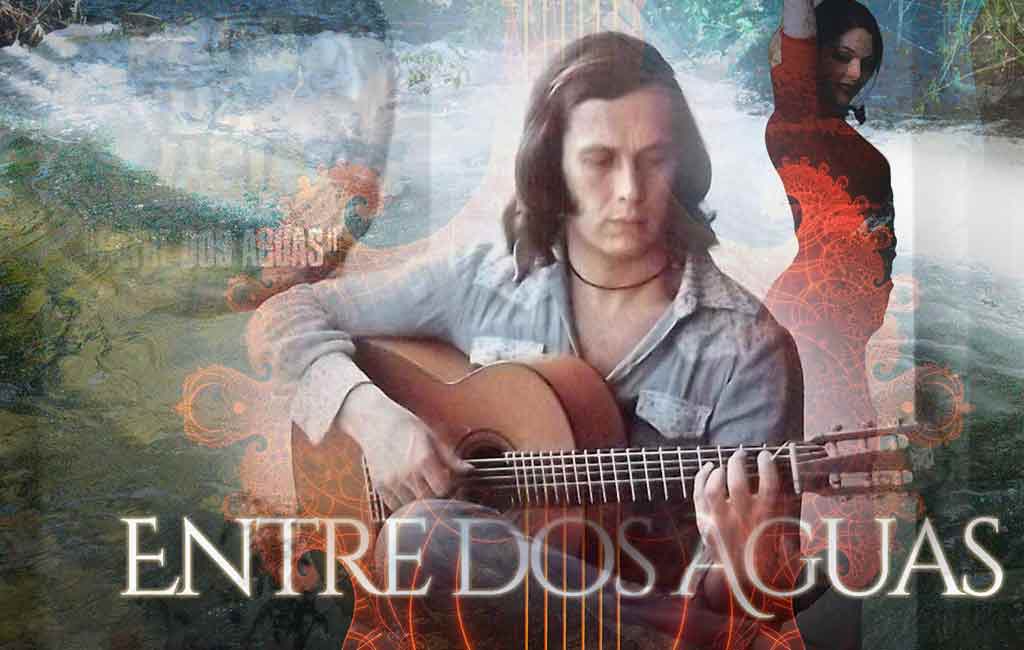
Paco De Lucia is the most important figure of all Spanish guitar artists. But among the world artists, too… It will sound cheesy, but I just do not have any other words to describe my contact with this man. With his simplicity and grandeur at the same time. Being a “legend and a father of flamenco music”, Paco De Lucia is the simplest and the most humble person ever. That is what makes him what he is, in the first place. Before everything, there are his social interactions and all the things he does that don’t have anything to do with the guitar. His social interactions are of course the first and the most important condition that put him among the most prominent contemporary artists, but that is making him being an institution as well.
It is easy reaching to play certain passages when you are alone in your room. But having that audio material as a base of your musical performing language – makes a completely different story. You really must understand EVERYTHING THAT HAPPENS IN MUSIC and then EXPRESS YOURSELF WITH THOSE SAME ELEMENTS that are the needed “means of expression”: river, sea, sun, wind, mountains… What I have experienced in a few days/nights of contact with Paco De Lucia is a vital change in my perception. Not so much in 2008 and 2009, while I was hanging around with a band almost as a “groupie girl”(just kidding) – Paco preferred me as a translator – instead of the official girl that was assigned to him for that job.
But in 2010 I played as an opening act and realized that Paco was delighted with my music. So we became inseparable, whenever he would hold a concert in my hometown. In all over 30 hours that we spent together, (constantly being interrupted with so boring people wanting to make stupid selfies), we just couldn’t wait to get to the hotel and have peace of mind for ourselves. When we were in the hotel room, we had a few quiet moments when we could talk. Paco’s attitude and perception changed my attitude SO MUCH… It had such an impact on my life and perception – that those several nights made a different person out of me…
This rumba uses the most typical harmonic sequence from all flamenco. Part A switches between the natural and the harmonic minor dominant, and that switches are the reason for the name “Between Two Waters”. They refer to the two oceans that surround the Iberian peninsula. Part B is just the pure fire and passion of flamenco, it bases on the most flamenco among all flamenco cadences, the 1st, 7th, 6th, and the 5th. The Maestro Paco De Lucia gave me permission to publish my own version of this flamenco standard; it’s currently in production, and it will be called “Entre Dos Mundos”, (the photos are from the Guitar Art Festival, February 2010, the concert after-party). The song Entre Dos Aguas is more than any other popularized flamenco, so let’s remember once more how it all started…
Paco De Lucia es probablemente el artista más importante de todos los guitarristas Espanoles, pero entre y los demas artistas mundiales…. Sé que sonará como una frase un poco “parafraseada”, pero no tengo otras palabras para describir mi contacto con este hombre, con su simplicidad y grandeza al mismo tiempo. Además de ser una “leyenda viviente y un padre de la música flamenca” en muchos sentidos, Paco De Lucia es la persona más sencilla y humilde que pueda imaginar. Eso que las cosas que el hace – son lo que le hace ser lo que es en realidad, en primer lugar. Antes que todo, están sus interacciones sociales, y todas las cosas aparte de la musica. Estoy hablando de las cosas que no tienen nada que ver con la guitarra. Sus interacciones sociales son, por supuesto, la primera e inevitable condición que lo coloca no solo entre los mejores y más destacados artistas contemporáneos, sino que lo está convirtiendo le en una institución.
Es fácil llegar a tocar ciertos pasajes solo en su habitación, pero para tener ese mismo material de audio como base de su lenguaje musical, cada noche en otra sala – verá que tiene que hacer algo más que cagarse los pantalones una vez, realmente debe entender TODO LO QUE SUCEDE EN LA MÚSICA, y luego EXPRESARSE CON LAS MISMAS PALABRAS QUE ESTA MUSICA LLEVA: río, mar, sol, viento, montañas… Lo que he experimentado en unos días / noches de contacto con Paco De Lucia es un cambio vital en mi percepción. No tanto en 2008 y 2009, cuando estaba con una banda como “groupie girl”, literalmente. Pero en 2010 toqué como acto de apertura y me di cuenta de que Paco está encantado con mi música, y que yo no esperaba jamas. En um poco más de 20 horas que pasamos juntos, (constantemente interrumpidos mientras estábamos afuera, con personas que querían hacer una estúpida selfie, excepto cuando estabamos en la habitación del hotel, esos fueron los pocos momentos tranquilos en los que pudimos hablar…) La actitud de Paco cambió mi actitud TANTO que tuvo un impacto tan grande en mi vida y percepción, eso me convirtió en una persona diferente, completamente…
Esta rumba utiliza la secuencia armónica más típica en todo el flamenco. La parte A alterna entre el menor natural y menor armonico, y ese cambio es la razón del nombre “Entre Dos Aguas”, que se refiere a los dos océanos que rodean la península Ibérica. La parte B es el puro fuego y la pasion del flamenco, se basa en la cadencia más flamenca entre todas las cadencias flamencas, la 1ª, 7ª, 6ª y 5ª. El Maestro Paco De Lucia me ha dado el permiso de publicar mi propia version de este flamenco estandard; esta en produccion de momento, y se llamara “Entre Dos Mundos”, (las fotos son del Guitar Art Festival, Febrero 2010, de la fiesta despues del concierto). La cancion Entre Dos Aguas mas que ninguna ha popularizado el flamenco, recordemos una vez mas como ha empiezado todo…


And this other video is one of the most interesting concert versions of this theme. Don’t get scared at 5:34, it is humanely possible, although it might not seem so… 🙂
Y esta es una de las versiones de los conciertos mas interesantes de este tema. No se asuste en el 5:34, es possible del punto de vista humano, aunque quizas no lo parezca… 🙂

